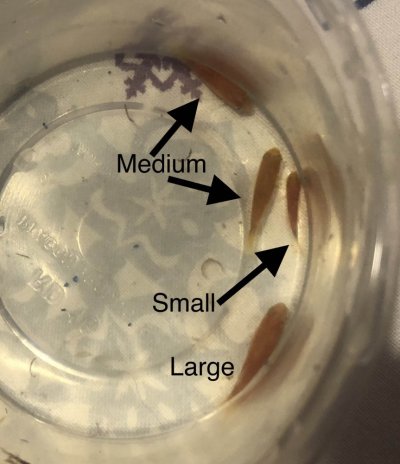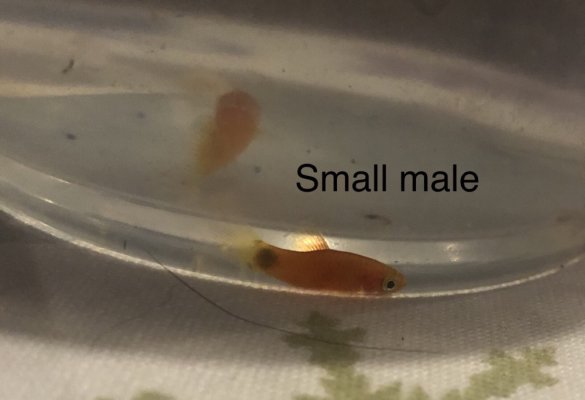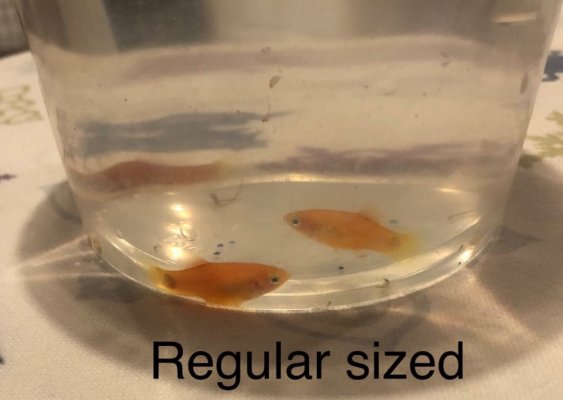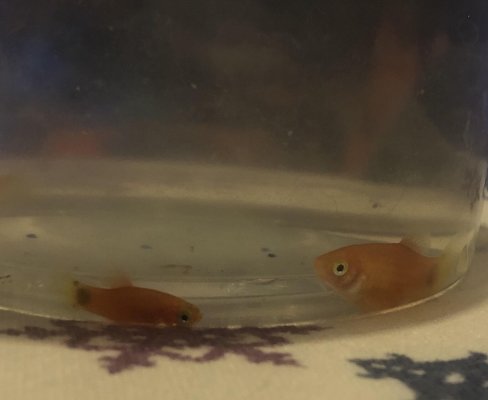So I have 4 Mickey Mouse platy fry that are almost 4 months old. 1 is large, 2 are average/medium size, and one is pretty small. The small one is also more of a long oval without the curves of the others.. kinda like a rectangle. He’s a good swimmer and seems to be eating fine, but I noticed he does rest on the rocks more than others in addition to his different shape/size. Does anyone have any ideas as to why he might be so small and shaped different?
I say he because this fish seems to be developing male characteristics. I also heard that in terms of growth rate, females blow up first, followed by regular size males, and then smaller males, is there any merit to that? This one seems to have peaked at his 2 month size.




I say he because this fish seems to be developing male characteristics. I also heard that in terms of growth rate, females blow up first, followed by regular size males, and then smaller males, is there any merit to that? This one seems to have peaked at his 2 month size.




